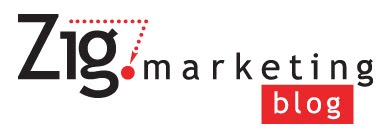Tuesday, October 6, 2009
FTC Cracks Down on Sponsored Bloggers
Thursday, October 1, 2009
Display Advertising: It's Really All About Relevance
Thursday, August 13, 2009
SEO vs. PPC: The Never Ending Battle
- Direct access and bookmarks
- Paid listings
- Organic listings
- Other referrer
Tuesday, July 14, 2009
Marketers Continuing the Shift from Traditional to Digital
- Social media (34%)
- Mobile Marketing (27%)
- Online Display Ads (17%)
- Search Marketing (15%)
- email (11%)
Monday, July 13, 2009
Social Media: #1 Trusted Form of Advertising Worldwide
Nielsen recently released a global study of over 25,000 Internet consumers from 50 countries, recommendations from personal acquaintances or opinions posted by consumers online are the most trusted forms of advertising worldwide. 90% of consumers surveyed said that they trust recommendations from people they know, while 70% trusted consumer opinions posted online. Social media is not just a fad, but here to stay, and more and more companies are beginning to add social media strategies to their advertising budgets.
“The explosion in Consumer Generated Media over the last couple of years means consumers’ reliance on word of mouth in the decision-making process, either from people they know or online consumers they don’t, has increased significantly,” says Jonathan Carson, President of Online, International, for the Nielsen Company.”

We have currently implemented social media campaigns for multiple clients of ours; engaging people talking not only about promotional campaigns, but also about the client's #1 concern, the product/service they sell. Tracking Pre and Post campaign “buzz" for our campaigns has only brought the need of social media for clients to fruition for us.
Wednesday, July 1, 2009
Big Sites, Big Ads, Big Mistake
A recent post on TechCrunch and Mediapost announced that 37 top online publishers including ESPN, Forbes, CNN, and NY Times are going to begin running new, BIGGER ad units on their sites. Bigger doesn't mean better, it just means more of an annoyance for more people.
The three new ad units are named and sized as follows:
- The Fixed Panel (336×700) - remains in view as a user scrolls up or down the page
- The XXL Box (468×648), the extra wide side-of-page ad that expands to 936 x 648 and includes page-turn and video capability
- The Pushdown (970×418), which opens big to display the ad and then after seven seconds rolls up to the top of the page (collapsing to 970 x 66).
I agree completely with Robin Wauters, who wrote on her TechCrunch post "Is it just me or does anyone else think that display advertising units on websites should become more relevant to them instead of just bigger? What are next, 1200×600 ads?" Research upon research is showing that it’s the contextual relevance, and not the size that matters.
Monday, June 22, 2009
Women Put Trust in Social Media
According to The 2009 Women in Social Media Study of the 79 Million women online, over half are taking part in social media on a weekly basis. This study by BlogHer, iVillage and Compass Partners also showed that 64% of women are nearly twice as likely to use blogs than social networking sites as a source of information. 43% Use social media for advice and recommendations and 55% for opinion-sharing.
Social Media Activities include:
- Social networks (e.g. Facebook, MySpace, LinkedIn)
- Blogging
- Reading blogs
- Posting to blogs
- Message boards & forums
- Status Updating (e.g.Twitter)



